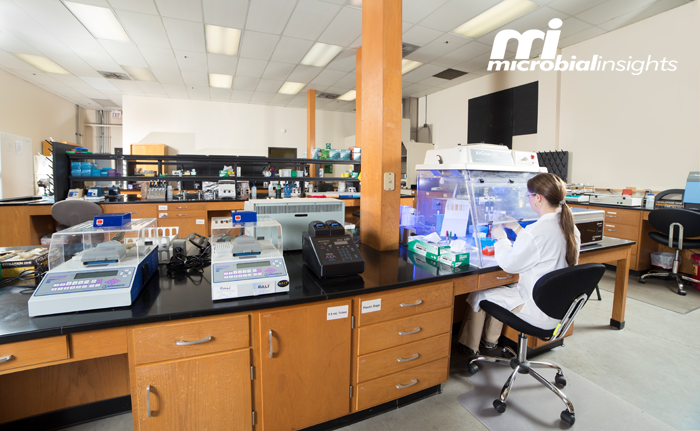Molecular Biological Tools and Advancing the Science of Remediation

Since the early 1990s, bioremediation has risen from an emerging technology for groundwater cleanup to an established site management strategy. The evolution from promising to proven remedy has been driven in large part by science-based innovations in the environmental remediation industry.
For more than 20 years, REGENESIS and Microbial Insights, an independent molecular microbiology laboratory, have been committed to “advancing the science of remediation.” Just as REGENESIS has been the global leader in environmental remediation solutions, Microbial Insights has been the trailblazer in the development and application of cutting-edge molecular biological tools (MBTs) to aid in site management decisions.
MBTs are a collection of techniques based on direct analysis of biomolecules like DNA, RNA and PLFA and innovative technologies like stable isotope probing that provide more accurate quantification and comprehensive characterization of microorganisms responsible for contaminant biodegradation and more conclusive evaluation of bioremediation.
Microbial Insights
Microbial Insights, Inc. (MI) was established in 1992 as a technology transfer company based on the revolutionary research of Dr. David C. White, a pioneer in the development of phospholipid fatty acid analysis (PLFA) and champion of MBTs in environmental remediation.
The DNA Laboratory
In 1998, MI became the first commercial laboratory to offer DNA-based techniques to the environmental remediation industry. Always striving to be at the forefront of microbial analyses, MI began to offer quantitative polymerase chain reaction (qPCR) analysis in 2002 – only a few years after the introduction of the first qPCR instrument. Always promoting science in remediation, REGENESIS was an early adopter advocating qPCR quantification of Dehalococcoides and functional genes as an integral part of site management decisions at chlorinated solvent sites. Since then, MI has developed over 100 qPCR (CENSUS®) assays in house to evaluate a broad range of microbial processes including biodegradation of chlorinated solvents, petroleum hydrocarbons, fuel oxygenates and emerging contaminants like 1,4-dioxane.
Innovations continue in the MI DNA laboratory. In 2012, MI began to offer QuantArray®-Chlor and QuantArray®-Petro. The QuantArray® is a unique microfluidic qPCR platform that provides the simultaneous quantification of a broad suite of key microorganisms and functional genes for comprehensive yet cost-effective assessment of biodegradation. In addition, MI now offers metagenomics and next generation sequencing (NGS) – no other technique yet developed better characterizes microbial communities.
Bio-Traps® and In Situ Microcosms
Another important highlight of MI’s first 25 years is the introduction of Bio-Trap® samplers in collaboration with Dr. Kerry Sublette of the University of Tulsa. Bio-Trap® samplers are passive sampling tools that collect microbes over time to better understand biodegradation. The key to the Bio-Trap® approach is the unique sampling matrix Bio-SEP® beads – an engineered composite licensed exclusively by MI which provides a large surface area for microbial growth and is suited for MBT analysis.
Over time, the Bio-Trap® sampler has continued to evolve and now also serves as the basis of In Situ Microcosms (ISMs). ISMs combine Bio-Traps with additional passive sampling devices to provide the microbial, chemical and geochemical evidence needed to screen multiple treatment alternatives including REGENESIS Enhanced Aerobic Bioremediation and Enhanced Anaerobic Bioremediation products.
The Stable Isotope Laboratory
Stable Isotope Probing (SIP) is an innovative technique to determine whether in situ biodegradation is occurring. With SIP, Bio-Traps® are amended with a 13C labeled contaminant of concern and deployed in an impacted well. Upon recovery, the sampler is analyzed for 13C incorporation into biomass and dissolved inorganic carbon. In essence, the 13C label serves as a tracer. If biodegradation is occurring, the 13C will be detected in the end products of biodegradation – microbial biomass and CO2.
Recently, the laboratory has grown to also offer Compound Specific Isotope Analysis (CSIA). For some contaminants, isotopic ratios change as the compound is degraded whereas physical processes do not appreciably shift the ratios. Thus, CSIA can also provide conclusive evidence of contaminant degradation. Along with qPCR analysis, CSIA is commonly employed to evaluate and demonstrate the performance of Enhanced Anaerobic Bioremediation products.
Commitment to Data Quality
For nearly 25 years, the primary mission at MI has been to provide the most accurate and precise data in the industry to ensure that their clients can use qPCR and other MBT results as an integral part of site management decisions. All laboratories will lay claim to accurate results, but MI has independent validation of their accuracy and precision which cannot be said for other laboratories now beginning to offer MBTs. MI’s accuracy and precision are attributed not only to the quality of their assays and continued investment in instrumentation but also the experience of their staff and rigorous QA/QC procedures. With nearly 25 years of experience with a full spectrum of molecular biological tools (MBTs), MI has a proven track record for high quality and exceptional customer service that cannot be matched by other laboratories.

 Americas
Americas Europe
Europe Français
Français Deutsch
Deutsch Italiano
Italiano Español
Español



